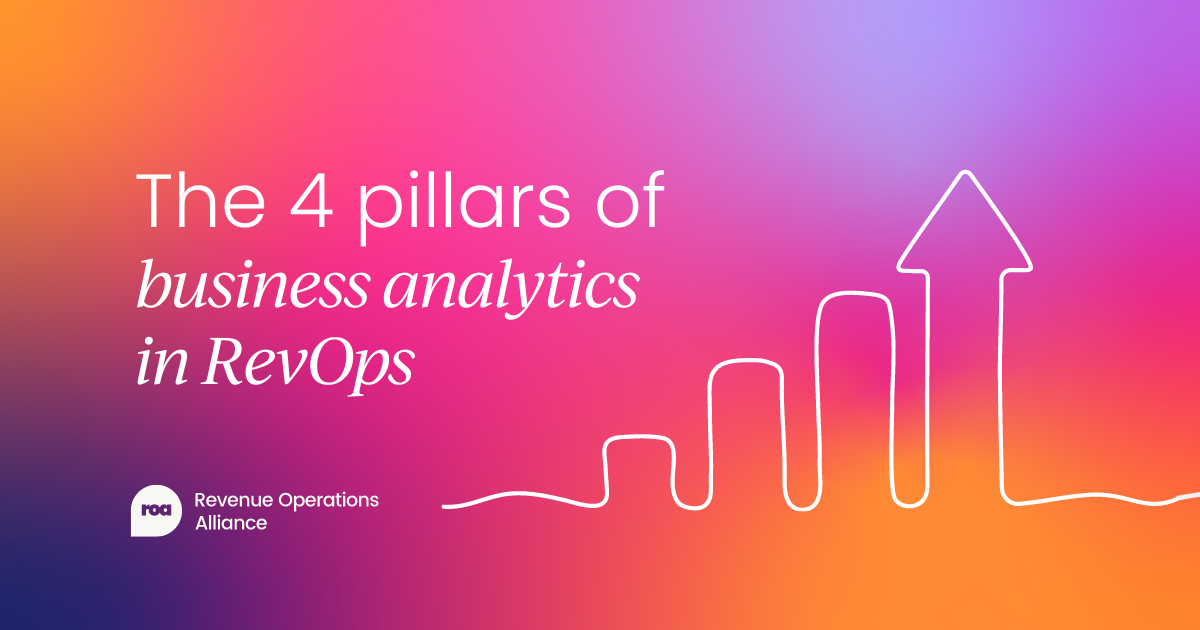This article comes from Javier Molina’s insightful talk at our 2024 Austin Revenue Operations Summit, check out his full presentation here.
Ever wonder why the average tenure of a Chief Revenue Officer is just 17 months? As someone who's been in the sales trenches, I've seen firsthand how the relationship between CROs and revenue operations can make or break success in this role.
In today's market, we're all being asked to do more with less. But that doesn't mean working harder – it means working smarter through better data-driven decisions, strategic segmentation, and efficient operations.
Drawing from my experience building both bottoms-up and enterprise sales motions, I want to share my perspective on what makes RevOps truly effective, how to navigate the complex CRO–RevOps relationship, and what really matters when measuring success.
So let’s dive right in.
My journey to CRO
When people ask me about my journey to becoming a CRO, I always have to chuckle. Like many people in software sales, I didn't start here. After college, I was selling security systems – not exactly the tech career I envisioned!
But that led me to SolarWinds, where I witnessed something unique: bottoms-up sales before it was even a thing. We were all about inbound and demand generation, building a billion-dollar business from $100 million in revenue when I joined.
After seven years there, I made the switch to MongoDB, which was the complete opposite – classic enterprise, tops-down sales following the John McMahon playbook. When I joined MongoDB, it was at about a million dollars in revenue. By the time I left, we were nearly a billion-dollar company.
That combination – from bottoms-up at SolarWinds to enterprise sales at MongoDB – accidentally shaped my perspective on go-to-market strategy in ways I couldn't have planned.

Why RevOps matters more than ever
Let me be straight with you – the role of a CRO is complex. We're juggling customer meetings, running strategies, building culture, managing leaders, dealing with HR issues, and collaborating with marketing. It's a lot, especially in startups where you might be focusing on SMB or mid-market segments.
This is exactly why RevOps is critical. You need a function that can:
- Create standardization in the business
- Help sales leaders make better, data-driven decisions
Here's the thing about sales leaders - we often run on instincts. And while instinct has its place, sometimes the data tells a different story.
A really good RevOps leader isn't afraid to say, "Look, I know you really like Joe on the East Coast. He's great at SKO, saying all the right things. But if you look at his attrition rate and the productivity of his reps, moving him into a second-line leader role might not be the best decision."
Those conversations aren't always comfortable, but they're crucial, and you know you have a good CRO when they're willing to listen.

The three numbers every RevOps team should know
Let me break down three fundamental numbers that often get mixed up in our world:
1. Capacity
This is what any individual sales rep can handle. Here's a reality check – if you have 10 reps at 1.5 million productivity, adding another 10 doesn't automatically mean doubling your numbers. You need to apply some scaling factor. Maybe use 1.2 million for planning.
Capacity helps you answer the fundamental question: is your engine big enough to reach your revenue targets?
2. Productivity
This is your actual output, measured annually. You might have 1.2 million capacity per rep but achieve 1.5 million productivity, meaning you're overachieving and should probably scale your sales org.
This is the real measure of your engine's performance.
3. Quota
This is your magical number for compensating reps. It could be 500k or 3 million - it's about incentivizing the right behaviors while making sure your comp cost model doesn't break the bank.
What really matters the most among these three? Productivity. If you can maintain productivity as you scale, keep pouring fuel on the fire.

Building better CRO-RevOps relationships
Whether you're working with a new CRO or an existing one, here's what makes a great RevOps leader:
- Master the data: Not just the data that supports what the CRO wants to see, but also what they might be missing. Show both sides of the story.
- Tell the story: One of the most underrated skills is the ability to communicate changes to the sales team. If you're changing quotas or adding accelerators, you need to sell it to the sales leaders and then to the sales team.
Let me give you an example:
When salespeople understand the 'why,' they're more likely to buy in.
I’ll share another story about thinking outside the box. At a previous company, we had refined our ideal customer profile through iteration and testing. We knew exactly what type of account would buy from us.
I asked for territory management help from the RevOps team. Initially, they said no. But then came a brilliant suggestion from our RevOps leader – sacrifice two headcounts to justify the spend, spread that quota across the remaining reps, and use the headcount budget for territory management support.
It worked beautifully. That team is now over 50 people globally, with an internal application for smarter decision-making. The lesson? Sometimes the best solutions come from finding creative middle ground between sales instincts and financial realities.

Looking ahead: What really matters in 2024 and beyond
Like I said earlier, in today's market, we're all being asked to do more with less. But that doesn't just mean working harder – it means working smarter. Here's what I believe matters most:
- Data-driven decisions: Understanding your business at a granular level. Know that if you put $5,000 in the top of the funnel, what it will lead to in terms of leads, conversions, and revenue.
- Segmentation: Your North America mid-market probably has different capacity than your commercial team in EMEA. Understanding these differences helps you invest wisely.
- Efficiency over headcount: Adding a salesperson should be one of the last things we do in a strategy. Focus on making your existing team more productive first.
Final thoughts
The relationship between CROs and RevOps is crucial for success in today's market. As a CRO, I rely on my RevOps team to be my compass, my reality check, and sometimes, my creative partner in problem-solving.
The best partnerships are built on mutual trust, data-driven insights, and the ability to find innovative solutions to complex problems.
Remember, it's not just about the numbers – it's about understanding what those numbers mean for your business and being able to tell that story effectively.
As we move forward in 2024 and beyond, the companies that get this right will be the ones that thrive, even in challenging markets.








